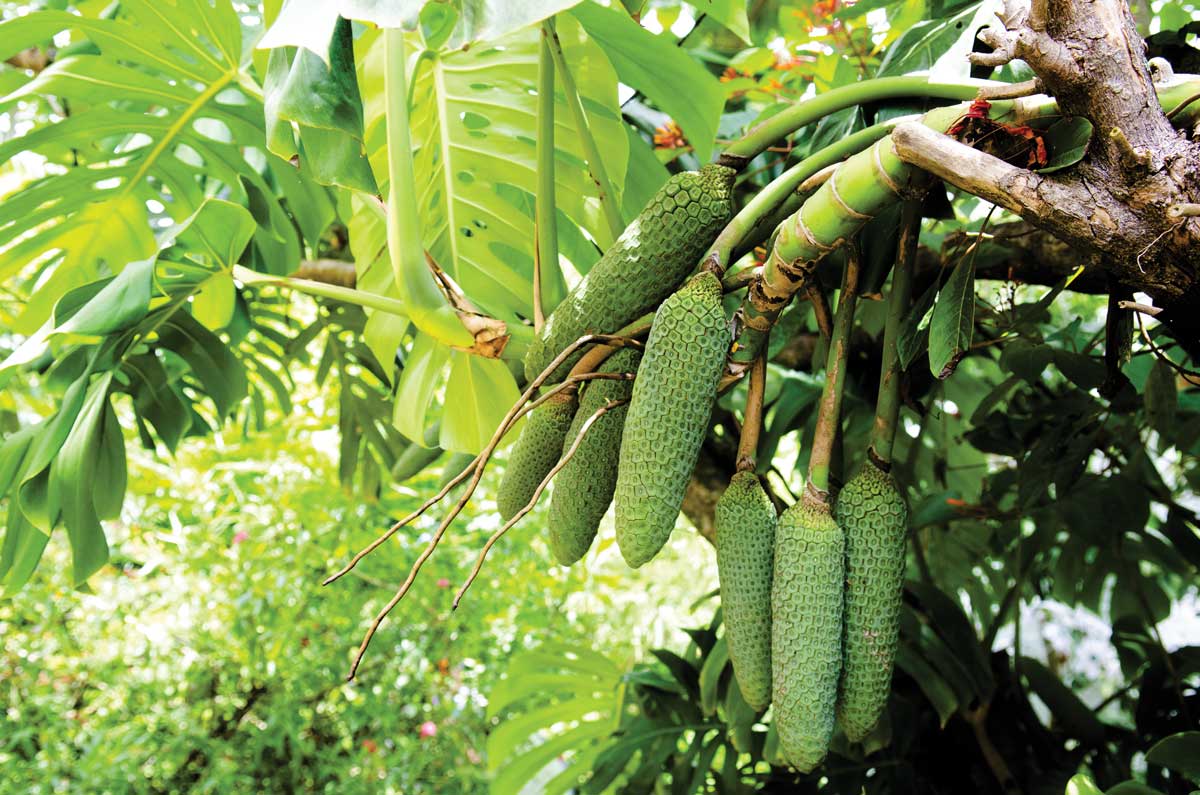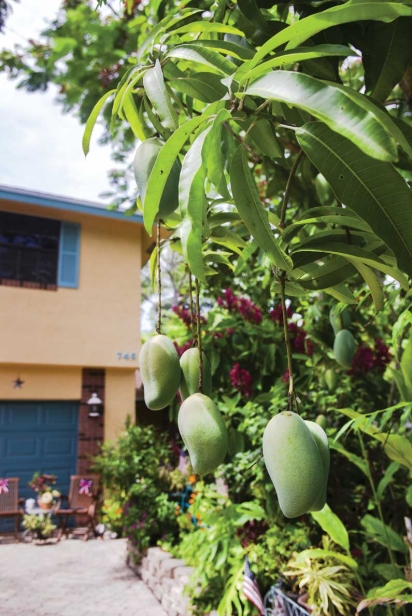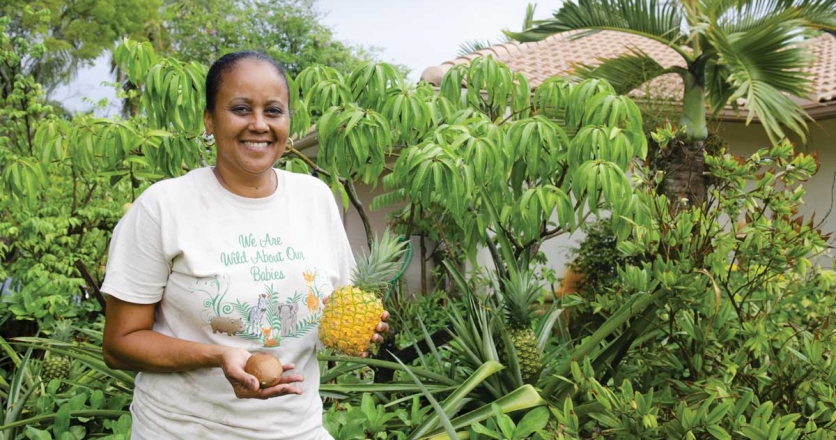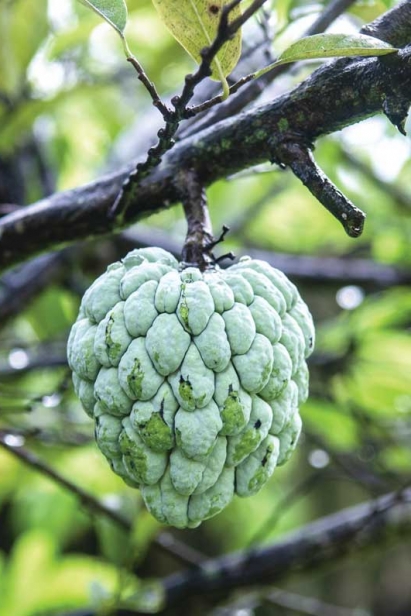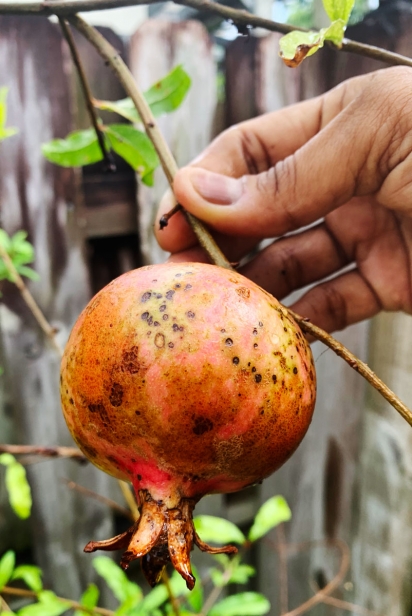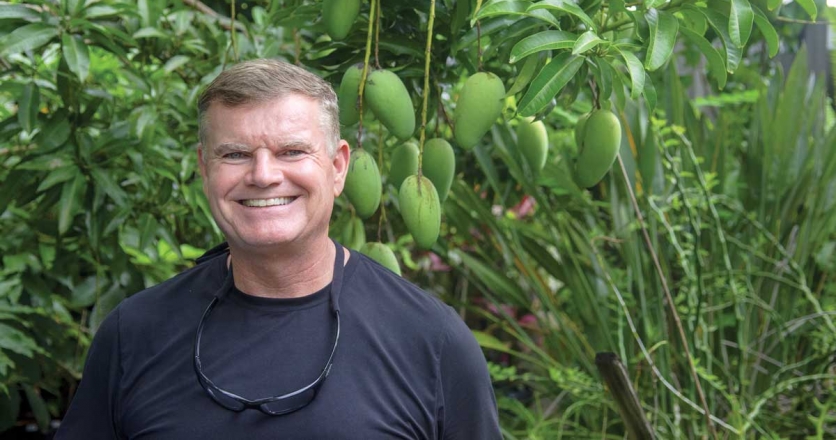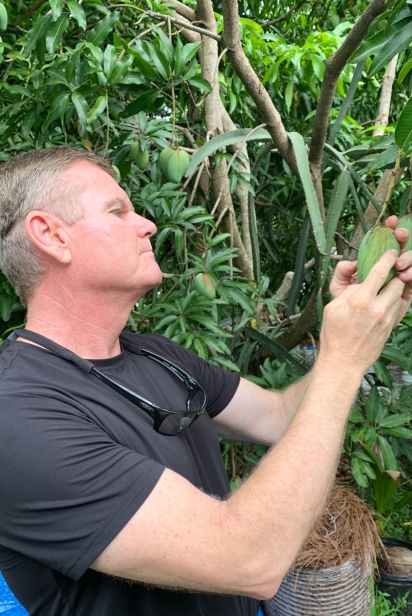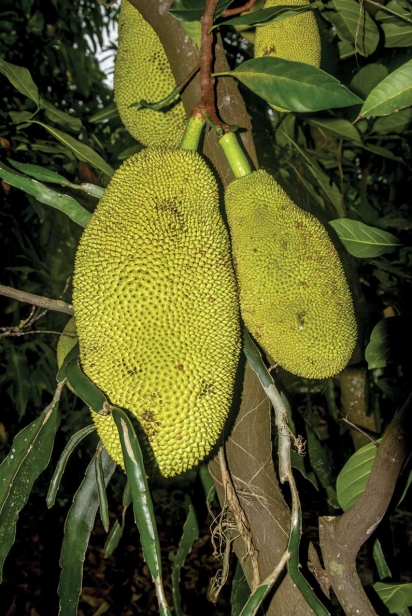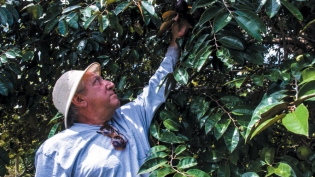Bountiful Backyards of Broward
Broward residents gave us a tour of their properties, where they're growing everything from tropical treats like mango, annonas, pineapples to rare spices, nuts and exotic specialties.
Winding Paths of Plenty
Karim and Isabelle Rossy, Davie
Every twist and turn in the Rossys’ backyard reveals something new: a butterfly garden, a collection of spice plants, a prolific clump of monstera deliciosa fruits hanging from a branch. Their collections reveal their individual preferences – he is from Montreal, and loves lemony flavors, while she grew up in Martinique, home to sugarcane, rum and tropical fruits – but also their collective love of nature and the joys of tending a colorful, fruitful landscape.
Karim, a mechanical engineer, lists his 18 mango cultivars, which include Carrie, Glenn, Mallika, Coconut Cream, Mahachanok, Julie, Ice Cream and Valencia Pride; his annonas (sugar apple, soursop, atemoya, Vietnamese green, atemoya Geffner); citrus; spices; and less-common edible plants, like macadamia nut; and chaya, a nutritious tree spinach whose leaves must be boiled before eating. Like many backyard gardeners, he says Hurricane Irma took its toll, but in a positive way. “It helped thin out large trees, and forced us to control size better via pruning.” They left some dead tree branches to attract wildlife.
Rossy points to a huge sapodilla with few fruits, an early mistake of planting a seedling. His advice: Get a grafted tree that will produce, in 3-5 years, the exact fruit of that cultivar. Look at the tag to see when it will fruit. Choose the right location and consider power lines. “Plant now!” he says – it takes time for trees to get established.
The Edible Landscape
Angela Wallace, Plantation
At first glance, Broward attorney Angela Wallace’s house looks like a well-groomed suburban property until you realize nearly all of her landscape is filled with fruit. The bromeliads in the front yard include pineapples growing underneath fruiting mango trees. Out back are myriad tropical fruit trees, most in containers: mango (Mallika, Nam Doc Mai, Mahachanock, Glenn); ambarella; soursop; coffee; miracle fruit; jackfruit; dragon fruit; lychee; pomegranate; annonas and black sapote.
A passionfruit vine winds along the wood fence. Multiple banana varieties anchor a corner. All her trees are kept small for easy harvesting. Around the house, four urn-like structures are rain barrels that collect water from the gutter, ready to use for irrigation.
Wallace says there were no fruit trees when she bought the house in 2006, but after visiting the Rare Fruit and Vegetable Council meetings, she got hooked on tropical fruits. “I wanted fruit, not flowers,” she says. “I’ve learned a lot at monthly meetings and classes.” She shares her bounty with neighbors, work colleagues, friends and family.
The Backyard Nursery
David Harold, Cooper City
Twelve years ago, David Harold started planting fruit trees he liked in his quarter-acre-plus property, figuring they’d become a meaningful project for his golden years. He retired early and is now following his passion, tending 39 mango trees including Choc-Anon, a Thai variety that can fruit twice a year; 14 jackfruit trees; fruiting cacao trees growing underneath; and three bee hives at the rear (he doesn’t harvest any honey).
Next to the house, there are racks of seedlings in tiny trays. Big tubs collect rainwater and one contains a foliar feeding mixture he calls “Witches Brew” that includes liquid kelp, fish emulsion, molasses, the vitamin solution Superthrive, coffee and rainwater.
“Everyone should grow their own food,” Harold says, who is now looking to make a business out of propagating trees, selling fruits and educating people about all aspects of growing. His vision is more than just commercial. “We’ve got to eat healthier,” he says.
RARE FRUIT AND VEGETABLE COUNCIL OF BROWARD COUNTY
rfvcbroward.org
Learn how to grow tropical fruits and vegetables by becoming a member of the RFVC. Founded in 1975, the RFVC hosts regular workshops and educational seminars, field trips, monthly meetings with educational speakers and semi-annual plant sales at their garden in Southwest Ranches. Memberships start at $25 a year.


